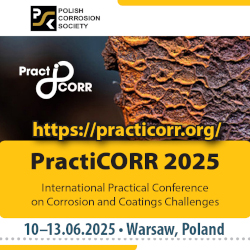Open Access (Artykuł w pliku PDF)
Durability of hemp-lime composites in the light of various research methods
dr inż. arch. Michał Gołębiewski, Politechnika Warszawska, Wydział Architektury
ORCID: 0000-0001-7206-0369
dr inż. Piotr Narloch, Politechnika Warszawska, Wydział Inżynierii Lądowej
ORCID: 0000-0002-5112-4498
mgr inż. Wojciech Piątkiewicz, Politechnika Warszawska, Wydział Inżynierii Lądowej
ORCID: 0000-0001-6986-8041
inż. Igor Wasilewski, Politechnika Warszawska, Wydział Inżynierii Lądowej
Adres do korespondencji: Ten adres pocztowy jest chroniony przed spamowaniem. Aby go zobaczyć, konieczne jest włączenie w przeglądarce obsługi JavaScript.
DOI: 10.15199/33.2023.09.04
Artykuł przeglądowy
Streszczenie. Kompozyt wapienno-konopny (hempcrete) stosowany jest w budownictwie od ponad 30 lat. Głównymi jego zaletami są właściwości cieplno-wilgotnościowe oraz niewielki wpływ na środowisko. Artykuł przedstawia literaturowy przegląd metod badawczych i wyników badań w celu opisania trwałości kompozytu. Materiał wykazuje odporność na zmienne warunki wilgotnościowe oraz korozję biologiczną i chemiczną, ale w kontakcie z wodą traci wytrzymałość mechaniczną. Przegląd literatury wskazuje na złożoność problematyki oraz liczne ograniczenia techniczne i metodologiczne skutkujące brakiem jednoznacznych wniosków.
Słowa kluczowe: kompozyt wapienno-konopny; trwałość; zrównoważone budownictwo.
Abstract. Hemp-lime composite (hempcrete) has been used in construction for over 30 years. The main advantages of the material are thermal and hygric properties and low environmental impact. The article presents a literature review of research methods and experimental results in order to describe the durability of the composite. The material is resistant to changing humidity conditions as well as biological and chemical corrosion, and at the same time loses itsmechanical strength in contact with water. The literature review indicates the complexity of the issues and numerous technical andmethodological limitations resulting in the lack of clear conclusions.
Keywords: hemp-lime composite; durability; sustainable construction.
Literatura
[1] International Energy Agency and the United Nations Environment Programme Global Status Report: Towards a Zero‐emission, Efficient and Resilient Buildings and Construction Sector. 2018.
[2] Amziane S. Overview on Biobased Building Material Made with Plant Aggregate. RILEM Technical Letters. 2016; DOI: 10.21809/rilemtechlett.v1.9.
[3] CierpuchaW. (red.)Technologia uprawy i przetwórstwa konopi włóknistej. Poznań: IWNiRZ; 2013.
[4] Khan BA, Wang J, Warner P, Wang H. Antibacterial Properties of Hemp Hurd Powder against E. Coli. Journal ofApplied Polymer Science. 2015; DOI:10.1002/app.41588.
[5] GołębiewskiM. Kompozyty konopno-wapienne (Hempcrete). Materiały Budowlane. 2016; DOI: 10.15199/33.2016.07.29.
[6] Barbhuiya S, Bhusan Das B. A Comprehensive Review on the Use of Hemp in Concrete. Construction and Building Materials. 2022; DOI: 10.1016/j.conbuildmat.2022.127857.
[7] GołębiewskiM,AdamczewskiG.Wytrzymałość na ściskanie kompozytówkonopno-wapiennychwytworzonych metodą ubijania. Materiały Budowlane. 2018; DOI: 10.15199/33.2018.09.24.
[8] PiątkiewiczW,Narloch P, PietruszkaB. Influence of Hemp-Lime Composite Composition on its Mechanical and Physical Properties.Archives ofCivil Engineering. 2020;DOI: 10.24425/ace.2020.134409.
[9] Seng B,Magniont C, Lorente S. Characterization of a Precast Hemp Concrete. Part I: Physical and Thermal Properties. Journal of Building Engineering. 2018; DOI: 10.1016/j.jobe.2018.07.016.
[10] Gołębiewski M, Pietruszka B. Współczynnik przewodzenia ciepła kompozytów konopno-wapiennych wytworzonych metodą ubijania. Materiały Budiwlane. 2019; DOI: 10.15199/33.2019.08.09.
[11] Walker R, Pavía S. Moisture Transfer and Thermal Properties of Hemp – Lime Concretes. Construction and Building Materials. 2014; DOI:10.1016/j.conbuildmat.2014.04.081.
[12] Collet F, Pretot S.ThermalConductivity ofHemp Concretes: Variation with Formulation, Density and Water Content. Construction and Building Materials. 2014; doi: 10.1016/j.conbuildmat.2014.05.039.
[13] Arehart JH,NelsonWS, SrubarWV.On the TheoreticalCarbon Storage andCarbon Sequestration Potential of Hempcrete. Journal of Cleaner Production. 2020; DOI: 10.1016/j.jclepro. 2020.121846.
[14] Allin S. Building with Hemp. 2nd ed. Seed Press; 2012.
[15] Stanwix W, Sparrow A. The Hempcrete Book: Designing and Building with Hemp-Lime.Green Books; 2014.
[16] GołębiewskiM.Aspekty zastosowania kompozytów wapienno-konopnych w budownictwie indywidualnych domów mieszkalnych w architekturze proekologicznej. Praca doktorska. PolitechnikaWarszawska; 2020.
[17] Delannoy G, Marceau S, Glé P, Gourlay E, Guéguen-Minerbe M, Diafi D, Nour I, Amziane S, Farcas F. Aging of Hemp Shiv Used for Concrete. Materials & Design. 2018; DOI: 10.1016/j.matdes. 2018.10.016.
[18] Brzyski P. Kompozyt wapienno-konopny jako materiał ścienny spełniający zasady zrównoważonego rozwoju w budownictwie. Praca doktorska. Politechnika Lubelska; 2018.
[19] Collet F, Chamoin J, Pretot S, Lanos C. Comparison of theHygric Behaviour of ThreeHemp Concretes. Energy and Buildings. 2013; DOI: 10.1016/j.enbuild.2013.03.010.
[20] ZerroukiR,BenazzoukA,CourtyM,BenHamed H. Potential Use of Matakaolin as a Partial Replacement of Preformulated Lime Binder to Improve Durability ofHempConcrete underCyclicWetting/DryingAging. Construction andBuildingMaterials. 2022; DOI: 10.1016/j.conbuildmat. 2022.127389.
[21 [ Benmahiddine F, Bennai F, Cherif R, Belarbi R, Tahakourt A, Abahri K. Experimental Investigation on the Influence of Immersion/Drying Cycles on the Hygrothermal and Mechanical Properties of Hemp Concrete. Journal of Building Engineering. 2020; DOI: 10.1016/j.jobe.2020.101758.
[22] Sheridan J, SonebiM, Taylor S,Amziane S. The Effect of Long TermWeathering on Hemp and Rapeseed Concrete. Cement and Concrete Research. 2020; DOI: 10.1016/j.cemconres.2020.106014.
[23] Marceau S, Glé P, Guéguen-Minerbe M, Gourlay E, Moscardelli S, Nour I, Amziane S. Influence ofAcceleratedAging on the Properties ofHemp Concretes. Construction and Building Materials. 2017; DOI: 10.1016/j.conbuildmat.2016.11.129.
[24]DelannoyG,Marceau S,Glé P,GourlayE,Guéguen- MinerbeM,AmzianeS,FarcasF.DurabilityofHemp ConcretesExposedtoAcceleratedEnvironmentalAging. Construction and Building Materials. 2020; DOI: 10.1016/j.conbuildmat.2020.119043.
[25] Arizzi A, Viles H, Martín-Sanchez I, Cultrone G. Predicting the Long-TermDurability ofHemp-Lime Renders in Inland and Coastal Areas Using Mediterranean, Tropical and Semi-Arid Climatic Simulations. Science of the Total Environment. 2016; DOI: 10.1016/j.scitotenv.2015.10.141.
[26]Walker R, Pavia S,Mitchell R.Mechanical Properties and Durability of Hemp-Lime Concretes. Construction and Building Materials. 2014; DOI: 10.1016/j.conbuildmat.2014.02.065.
[27] DeBruijn PB, JeppssonKH, SandinK,NilssonC. Mechanical Properties ofLime-HempConcreteContaining Shives and Fibres. BiosystemEngineering. 2009; DOI: 10.1016/j.biosystemseng.2009.02.005.
[28] SassoniE,ManziS,MotoriA,MontecchiM,CantiM. Experimental Study on the Physical-Mechanical Durability of Innovative Hemp-Based Composites for the Building Industry. Energy and Buildings. 2015; DOI: 10.1016/j.enbuild.2015.07.022.
[29] Horszczaruk E, Strzałkowski J, Głowacka A, Paszkiewicz O, Markowska-Szczupak. A. Investigation of Durability Properties for Lightweight Structural ConcretewithHemp Shives Instead ofAggregate. Applied Sciences. 2023;DOI: 10.3390/app13148447.
[30] Sabir B,Wild S, Bai J.Metakaolin and Calcined Clays as Pozzolans for Concrete:AReview. Cement and Concrete Composites. 2001; DOI: 10.1016/S0958-9465(00)00092-5.
[31] Sheridan J, SonebiM, Taylor S,Amziane S. The Effect of a Polyacrylic Acid Viscosity Modifying Agent on the Mechanical, Thermal and Transport Properties of Hemp and Rapeseed Straw Concrete. Construction and Building Materials. 2020; DOI: 10.1016/j.conbuildmat.2019.117536.
[32] Mohr BJ, Nanko H, Kurtis KE. Durability of Kraft Pulp Fiber-Cement Composites to Wet/Dry Cycling. Cement and Concrete Composites. 2005; DOI: 10.1016/j.cemconcomp.2004.07.006.
[33] Wei J, Meyer C. Degradation Mechanisms of Natural Fiber in the Matrix of Cement Composites. Cement and Concrete Research. 2015; DOI: 10.1016/j.cemconres.2015.02.019.
[34] Botas SMS, Rato VM, Faria P. Testing the Freeze/Thaw Cycles in Lime Mortar. RILEM Proceedings Pro 078: HMC2010, 2nd Historic Mortars Conference and RILEMTC 203-RHMFinal Workshop. 2010; 417 – 425.
[35] SassoniE,ManziS,MotoriA,MontecchiM,CantiM. Novel Sustainable Hemp-Based Composites for Application in the Building Industry: Physical, Thermal andMechanicalCharacterization.Energy andBuildings. 2014; DOI:10.1016/j.enbuild. 2014.03.033.
[36] ShirakawaMA,TavaresRG,GaylardeCC,Taqueda MES, Loh K, JohnVM. Climate as theMost Important FactorDeterminingAnti-FungalBiocidePerformance in Paint Films. Science of the Total Environment. 2010; DOI: 10.1016/j.scitotenv.2010.07.084.
[37] Hirst E. Characterisation of Hemp-Lime as a Composite BuildingMaterial. PhDthesis.University of Bath; 2013.
[38] Arnaud L, Gourlay E. Experimental Study of Parameters Influencing Mechanical Properties of Hemp Concretes. Construction and BuildingMaterials. 2012; DOI: 10.1016/j.conbuildmat.2011.07.052.
[39] Sedan D, Pagnoux C, Chotard T, Smith A, Lejolly D, Gloaguen V, Krausz P. Effect of Calcium Rich and Alkaline Solutions on the Chemical Behaviour of Hemp Fibres. Journal of Materials Science. 2007; DOI: 10.1007/s10853-007-1903-4.
[40]DelannoyG,Marceau S,Glé P,GourlayE,Guéguen- MinerbeM,DiafiD,Amziane S, Farcas F. Impact of Hemp Shiv Extractives on Hydration of Portland Cement. Construction and Building Materials. 2020; DOI: 10.1016/j.conbuildmat. 2020.118300.
[41] Brzyski P,GładeckiM, RumińskaM, PietrakK, Kubiś M, Łapka P. Influence of Hemp Shives Size on Hygro-Thermal and Mechanical Properties of a Hemp-Lime Composite. Materials. 2020; DOI: 10.3390/ma13235383.
Przyjęto do druku: 10.08.2023 r.
Materiały Budowlane 09/2023, strona 13-19 (spis treści >>)































